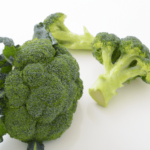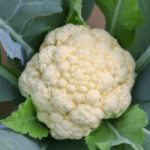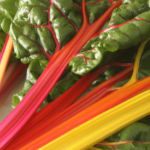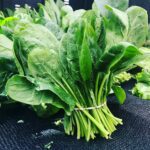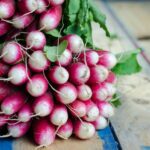Embrace the Chill with These 10 Cold-Hardy Vegetables
Cold-hardy vegetables, also known as winter vegetables, are perfect for winter planting in regions with lower temperatures. These frost-tolerant vegetables can thrive in cool and frosty conditions, making them an ideal choice for your cold-weather crop. Growing cold-hardy vegetables will extend your growing season, providing you with fresh and nutritious produce throughout the year. Here are ten fantastic cold-hardy vegetables to grow in your garden for a bountiful winter harvest.
Winter Vegetables
-
Arugula (Zones 3-10)
Arugula, or rocket, is a leafy green vegetable with a peppery flavour. It can be planted in early spring or late summer for a continuous harvest, as it tolerates frost down to 15°F (-9°C). Arugula prefers well-drained soil and can be grown in partial shade and full sun. Harvest the leaves when they are young and tender for the best flavour.
-
Broccoli (Zones 3-10)
Broccoli is a nutrient-rich vegetable with vitamins A, C, and K. This cool-season crop can withstand temperatures as low as 26°F (-3°C). Broccoli prefers full sun and well-draining, fertile soil. For a fall harvest, sow seeds indoors 6-8 weeks before the average first frost date and transplant seedlings outdoors when they have 4-6 true leaves.
Related Article: How to Grow Broccoli: A Comprehensive Guide.
-
Cauliflower (Zones 2-11)
Cauliflower is another cool-season vegetable that can be grown in temperatures as low as 26°F (-3°C). For a fall harvest, sow seeds indoors 6-8 weeks before the average first frost date and transplant seedlings outdoors when they have 4-6 true leaves. Cauliflower requires consistent moisture and nutrient-rich soil to produce large, tender heads. Grow it in full sun for best results.
-
Swiss Chard (Zones 3-10)
Swiss chard is a leafy green vegetable with colourful stems, making it an attractive addition to your garden. It can tolerate temperatures down to 15°F (-9°C) and be harvested throughout the winter in milder climates—Swiss plant chard in well-draining soil with full sun to partial shade. Harvest leaves as needed, but avoid taking more than one-third of the plant at a time to ensure continuous growth.
-
Kale (Zones 2-10)
Kale is a superfood packed with vitamins A, C, and K and antioxidants. This cold-hardy vegetable can survive temperatures down to 5°F (-15°C) and becomes even sweeter after a frost. Plant kale in well-draining, fertile soil and provide it with full sun to light shade. Harvest the outer leaves as needed, allowing the center to continue producing new growth.
Related Article: A Complete Guide to Growing Kale.
-
Carrots (Zones 3-10)
Carrots are root vegetables that can be harvested throughout the winter if the ground doesn’t freeze. They can tolerate temperatures down to 15°F (-9°C) and often become sweeter after a frost. Plant carrot seeds in loose, well-draining soil, providing them with full sun. Thin seedlings to 1-2 inches apart to ensure proper root development.
Related Article: How to Grow Carrots: A Comprehensive Guide.
-
Spinach (Zones 2-9)
Spinach is a nutrient-dense leafy green, high in vitamins A, C, and K, as well as iron and calcium. This cold-hardy vegetable can survive temperatures down to 20°F (-6°C) and grow throughout the winter in milder climates. Plant spinach in well-draining soil and provide full sun to partial shade. Harvest outer leaves as needed, allowing the center to continue producing new growth.
Related Article: How to Grow Spinach: An In-Depth Guide for Gardeners.
-
Cabbage (Zones 1-10)
Cabbage is a versatile vegetable in various dishes, from coleslaw to sauerkraut. Cabbage prefers well-draining, fertile soil and full sun—harvest cabbage heads when firm and well-formed. This cold-hardy crop can tolerate temperatures down to 20°F (-6°C). For a fall harvest, sow seeds indoors 6-8 weeks before the average first frost date and transplant seedlings outdoors when they have 4-6 true leaves.
Related Article: How to Grow Cabbage from Seed to Harvest.
-
Beets (Zones 3-10)
Beets are a nutritious root vegetable, high in fibre, vitamins, and minerals. They can tolerate temperatures down to 20°F (-6°C) and grow throughout the winter in milder climates. Sow beet seeds directly in the garden 2-4 weeks before the average last frost date in spring or 8-10 weeks before the average first frost date in fall. Beets prefer loose, well-draining soil and full sun to partial shade. Harvest beets when the roots are 1-3 inches in diameter for the best flavour and texture.
Related Article: The Comprehensive Guide to Growing Beets.
-
Radishes (Zones 2-10)
Radishes are crunchy root vegetables that can add a spicy kick to your salads and dishes. They are one of the fastest-growing vegetables and can tolerate temperatures down to 20°F (-6°C). Sow radish seeds directly in the garden 4-6 weeks before the average last frost date in spring or 4-6 weeks before the average first frost date in fall. Radishes prefer well-draining soil and full sun to partial shade. Harvest radishes when they are 1-2 inches in diameter, usually about 3-4 weeks after planting.
Related Article: How to Grow Radishes: A Comprehensive Guide.
Winter Planting: A Seasonal Guide to Cold-Hardy Vegetables
Winter planting is an excellent way to make the most of your garden during the colder months. You can enjoy fresh, nutritious produce even when temperatures drop by selecting cold-hardy vegetables suited to your region. Winter planting offers several benefits, such as:
- Extending your garden’s productivity.
- Helping maintain soil health.
- Suppressing weeds.
Planting these vegetables at the right time is crucial; sow seeds or transplant seedlings in late summer or early fall, allowing them enough time to establish themselves before winter arrives. Remember to provide your winter vegetables with proper care, including:
- Consistent watering
- Adequate sunlight
- Protection from harsh winds
Additionally, consider using mulch or row covers to insulate the soil and protect your cold-hardy vegetables from extreme cold snaps. With careful planning and attention, winter planting can be a rewarding way to extend your gardening season and enjoy fresh, homegrown vegetables throughout the year.
Conclusion
Cultivating winter vegetables is a fantastic strategy to boost your garden’s productivity and savour fresh, nutrient-rich produce during the colder months. You can enjoy a plentiful harvest even in frosty conditions by choosing the right cold-hardy vegetables for your cold-weather crop and giving them the proper care. So, don’t let low temperatures deter you from gardening–plant these ten exceptional frost-tolerant vegetables and relish their delicious flavours and health benefits all year long.



